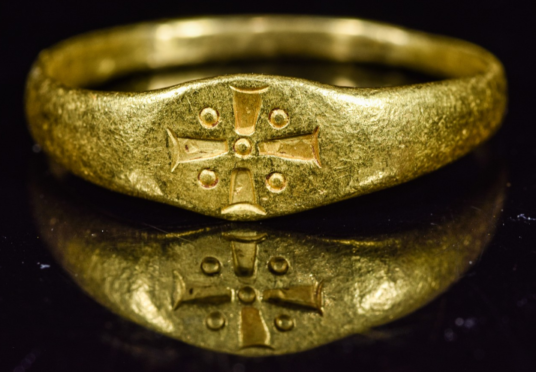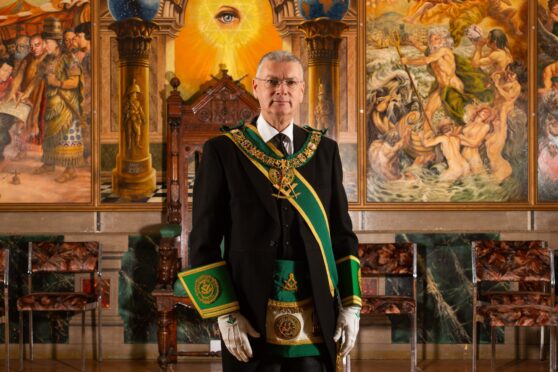Pax Romana are dealers and auctioneers in central London, and if you are looking for something fabulously ancient, they are the first port of call – unless you have exclusive access to the collections across the road in the British Museum!
On a visit a week or two back, my attention was drawn to a cracking item which made me think of a summer trip to Rosslyn Chapel, and being transfixed by the extraordinary transformation there since my first visit – mostly due, of course, to its connection to Dan Brown’s novel, The Da Vinci Code in 2003, and the subsequent film. Among many intriguing possibilities whirling around the chapel’s ancient walls is its connection to the Knights Templar of the Crusades period.
So to a rare Knights Templar gold ring with an impressed cross on its bezel which appeared at Pax Romana’s November sale. Dating to around 1100 AD, the time of the Crusades, the ring was in fine condition and, I was told, was very wearable.
But was it worn by one of knights? Its central ‘Jerusalem’ cross certainly suggests a link to the Catholic military order founded in the 1100s to protect pilgrims en route to the Holy Land.
Pax Romana, who try to authentic stock and auction items, cover a great variety of artefacts from Neolithic to Post Medieval periods – including Egyptian, Greek, Roman and Viking treasures.
They say the ring came from a private collection in Kent formed in the 1980s, and could not, therefore, pinpoint a find location or discovery date.
Nevertheless, an extraordinary survivor, it was no surprise to see the ring sell for an impressive £20,000 against presale hopes of only £1,750-£2,750.
Picture: Twelfth Century ring, £20,000 (Pax Romana Auctions).










